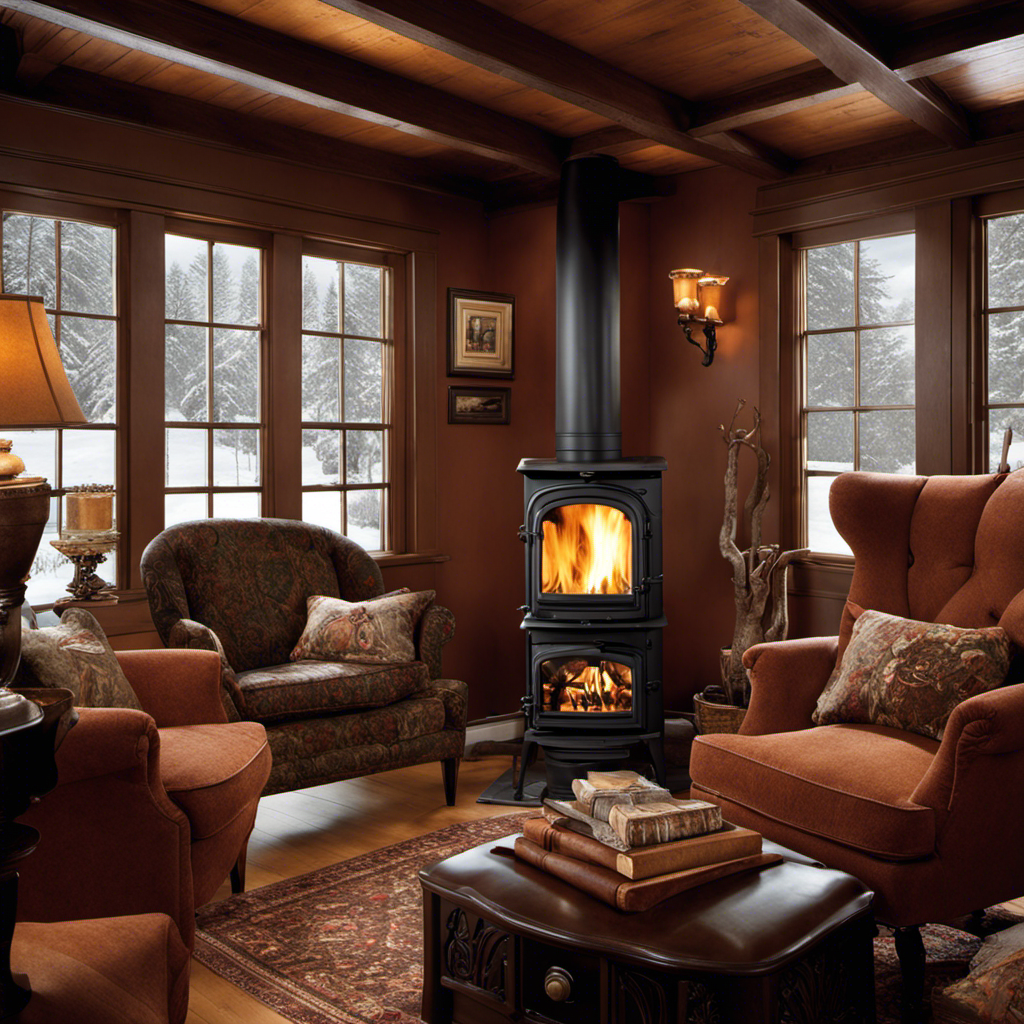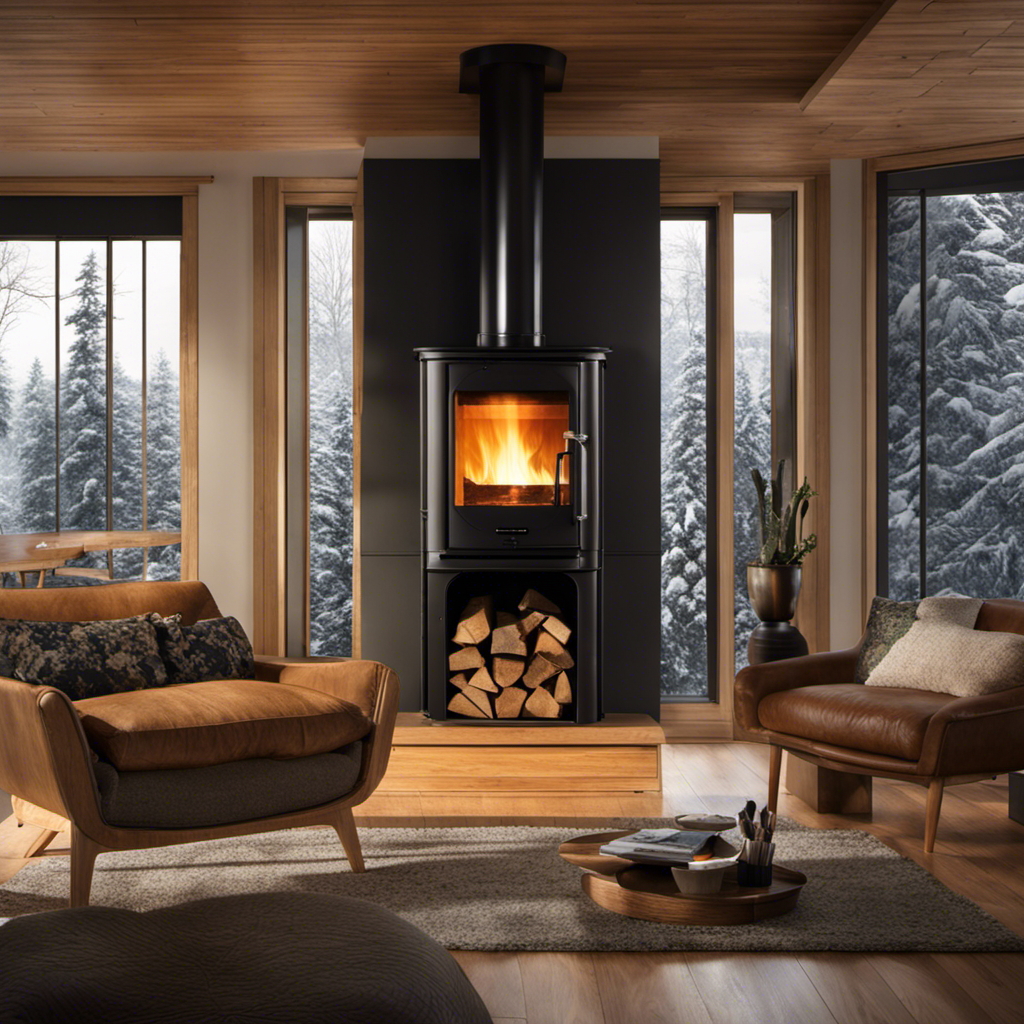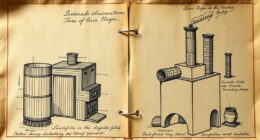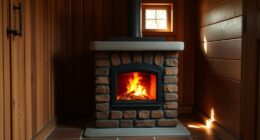I often come across the phrase, ‘A wood stove heats you twice: once when you chop the wood, and once more when it’s burning.’ But how can you keep that warmth going all night?
In this article, I’ll share essential tips and strategies for maximizing the heat output from your wood stove.
From insulation hacks to proper wood selection, smart placement, and overnight maintenance, I’ll guide you through the technical details to ensure a cozy and consistent burn throughout the night.
Key Takeaways
- Properly clean and maintain the wood stove to maximize heat output.
- Use insulation techniques to keep the heat inside and prevent heat loss.
- Choose seasoned wood with low moisture content for efficient burning.
- Strategically place the wood stove and utilize airflow strategies for even heat distribution.
Essential Tips for Maximizing Heat Output From Your Wood Stove
I’ve found that regularly cleaning the stovepipe is crucial for maximizing heat output from my wood stove. When the stovepipe is clogged with soot and debris, it restricts the airflow and reduces the efficiency of the stove. By cleaning the stovepipe regularly, I ensure that the hot gases can escape freely, allowing the stove to burn more efficiently and produce more heat.
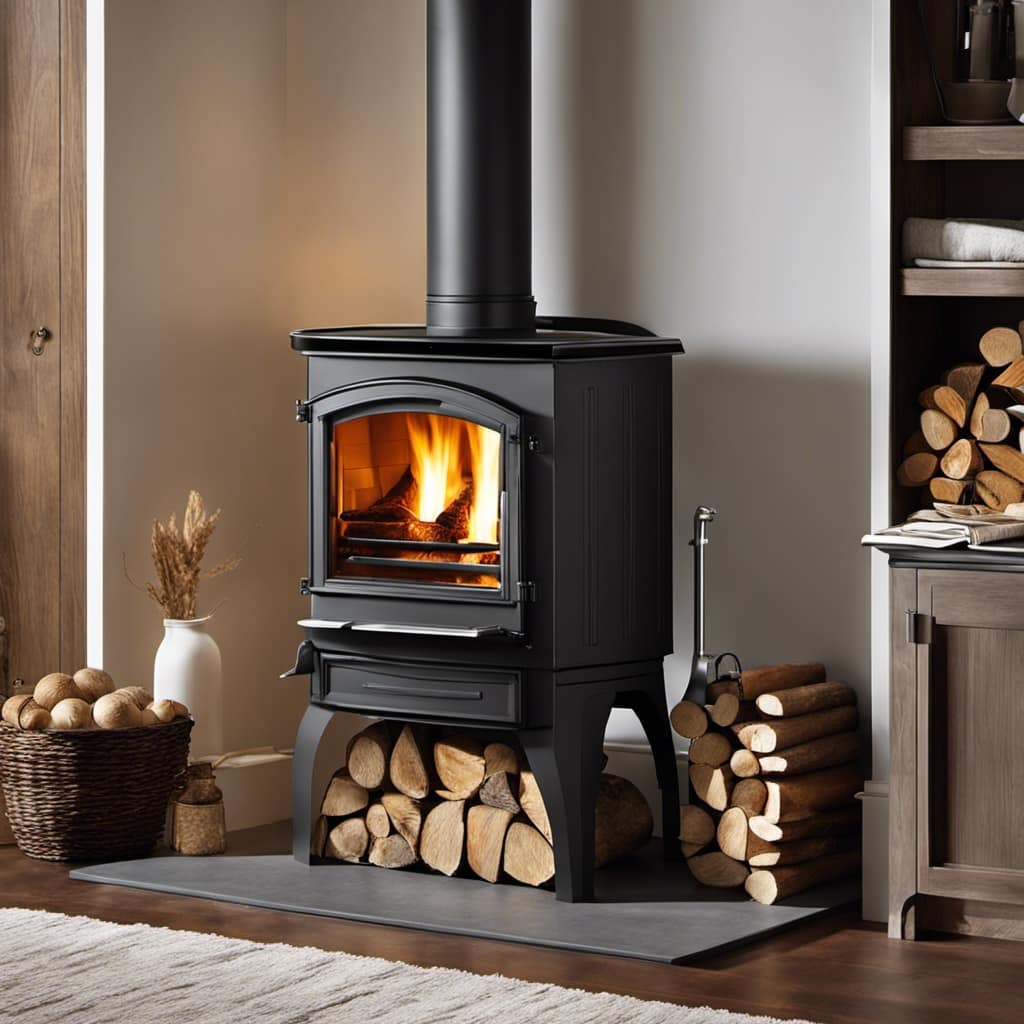
Another important factor for maximizing heat output is efficient damper usage. The damper controls the amount of air entering the stove, and by adjusting it properly, I can achieve the optimal wood stove temperature. Opening the damper too much will cause the fire to burn too quickly, while closing it too much will result in a smoldering fire. Finding the right balance is essential for maximizing heat output and keeping my home warm.
Insulation Hacks to Keep the Heat In
To effectively keep the heat in, I use weatherstripping on my doors and windows, and I also utilize thermal curtains to minimize heat loss. These insulation techniques are crucial in reducing energy waste and ensuring a cozy, warm home.
In addition to these methods, I’ve implemented a few other energy-saving solutions that have proved to be highly effective:
-
Insulating my attic: I’ve added insulation in my attic to prevent heat from escaping through the roof. This not only keeps my home warm but also reduces my heating bills.
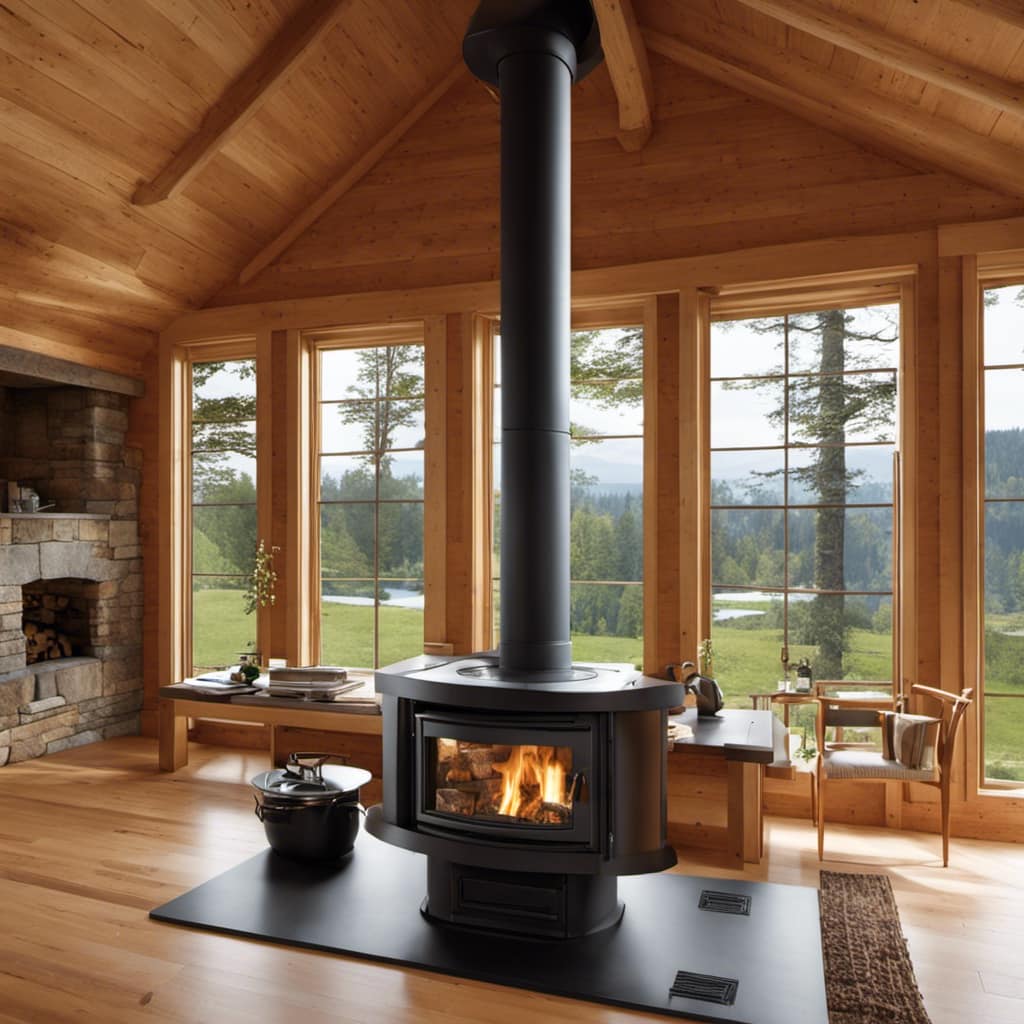
-
Sealing air leaks: I’ve carefully sealed any gaps or cracks in my walls, floors, and ceilings to prevent cold air from seeping in and warm air from escaping. This simple step has made a significant difference in maintaining a comfortable indoor temperature.
Proper Wood Selection for Long-lasting and Efficient Burning
I ensure long-lasting and efficient burning in my wood stove by carefully selecting the proper wood for optimal heat output. One of the key factors I consider is the moisture content of the wood. Seasoned wood, which has been properly dried, is ideal for burning in a wood stove. It has a lower moisture content, typically below 20%, compared to freshly cut or green wood, which can have a moisture content as high as 50%. The moisture in green wood reduces its energy potential and makes it harder to ignite. It also produces more smoke and creosote buildup, which can decrease the efficiency of the stove and pose a fire hazard.
To illustrate the importance of moisture content in wood selection, here is a comparison table:
| Wood Type | Moisture Content |
|---|---|
| Seasoned | Below 20% |
| Green | Around 50% |
| Kiln-dried | Below 10% |
| Air-dried | Around 15-20% |
| Wet | Above 50% |
Smart Placement and Airflow Strategies for Even Heat Distribution
Usually, I position my wood stove near a central location and utilize proper airflow techniques to ensure even heat distribution throughout the room. This not only maximizes the stove’s efficiency, but also allows for better temperature regulation techniques. Here are a few strategies I use to achieve this:
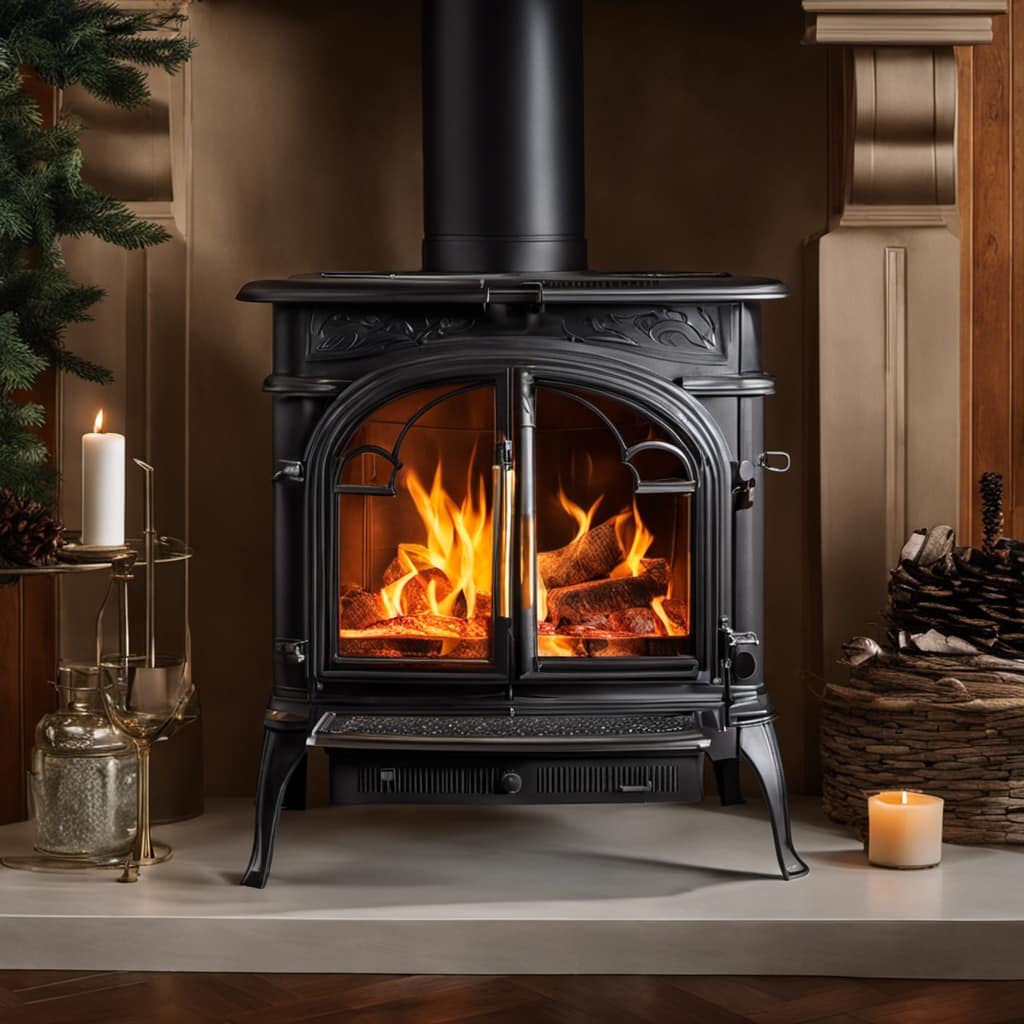
-
Adjust the stove vents: By opening or closing the stove vents, I can control the amount of airflow and heat output. This helps maintain a comfortable temperature in the room.
-
Utilize a stove fan: A stove fan can improve heat circulation by pushing warm air further into the room. This ensures that every corner receives the desired level of warmth.
By implementing these techniques, I can effectively distribute heat evenly throughout the room and optimize the stove’s performance. This ensures a comfortable and cozy environment during the colder months.
Now, let’s discuss overnight maintenance to ensure a consistent burn.
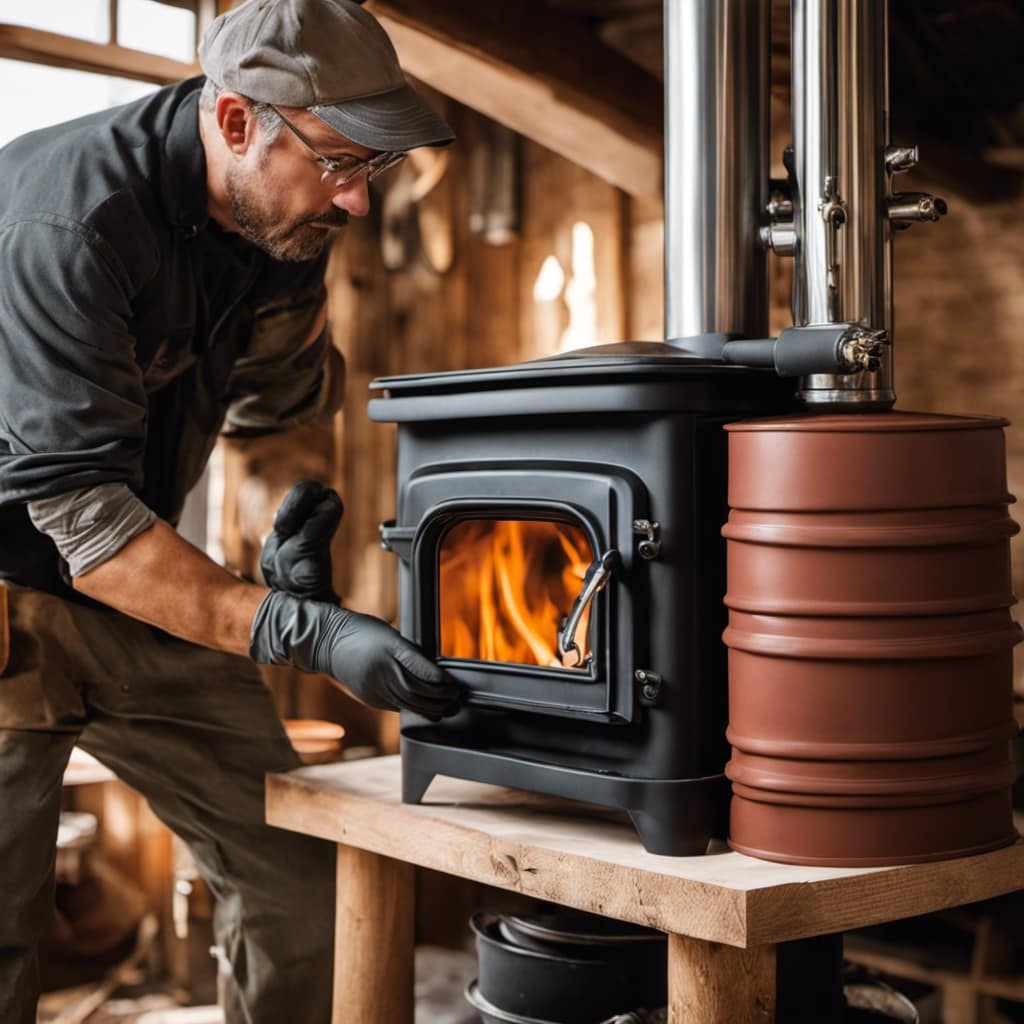
Overnight Maintenance to Ensure a Consistent Burn
With proper fuel placement and regular monitoring, I can ensure a consistent burn throughout the night, allowing me to wake up to a warm and cozy home in the morning. Nighttime fueling is crucial to achieve this. By carefully stacking the wood inside the stove, I maximize heat production and minimize heat loss. I start by placing larger logs at the bottom, creating a sturdy base. Then, I add smaller logs and kindling on top, ensuring proper airflow for optimal combustion. To further reduce heat loss, I use a baffle or damper to control the amount of air entering the stove. By adjusting it correctly, I can maintain a steady burn rate throughout the night, conserving fuel and keeping my home comfortably warm.
| Nighttime Fueling Tips | Why It Matters |
|---|---|
| Proper fuel placement | Maximizes heat production and minimizes heat loss |
| Using a baffle or damper | Controls air intake, maintaining a steady burn rate |
| Regular monitoring | Ensures the stove is operating efficiently throughout the night |
Frequently Asked Questions
How Can I Prevent My Wood Stove From Producing Too Much Smoke?
I prevent excess smoke from my wood stove by ensuring proper airflow and using seasoned firewood. This reduces emissions and keeps the stove burning efficiently throughout the night, providing warmth while minimizing environmental impact.
What Are Some Common Mistakes to Avoid When Using a Wood Stove for Heating?
When using a wood stove for heating, it is important to avoid common mistakes such as improper installation and using wet or unseasoned wood. These can affect the stove’s efficiency and cause potential safety hazards.
Are There Any Safety Precautions I Should Take When Using a Wood Stove Overnight?
When using a wood stove overnight, safety precautions are crucial. It’s important to have a fire extinguisher nearby, install carbon monoxide detectors, and never leave the stove unattended. Stay warm by properly insulating your home and using seasoned firewood.
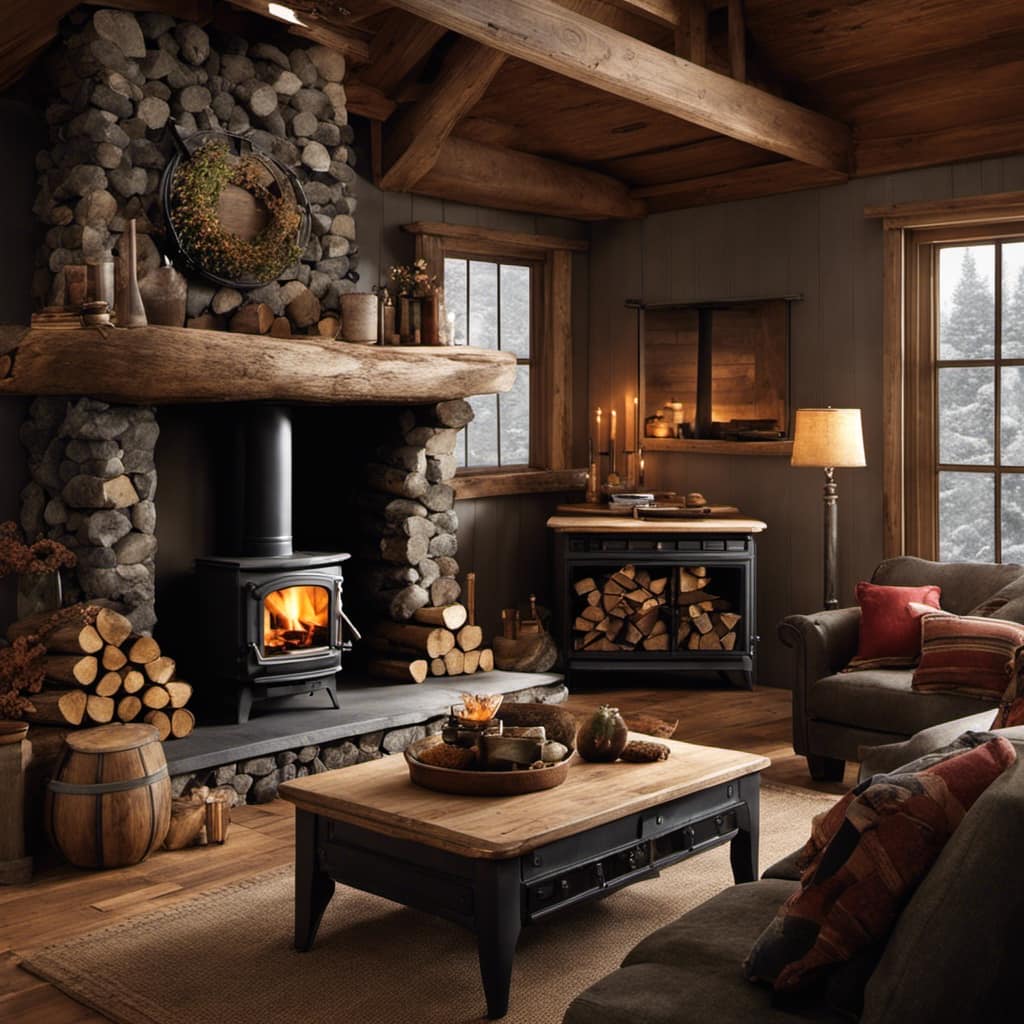
Can I Use Alternative Materials Besides Wood in My Wood Stove for Heating?
Using alternative materials in a wood stove, such as pellet fuel or coal, can provide benefits like increased heat output and longer burn times. These options can be effective for staying warm all night.
How Often Should I Clean and Maintain My Wood Stove to Ensure Optimal Performance?
I clean and maintain my wood stove regularly to ensure optimal performance. I follow a cleaning schedule and use various techniques like brushing the flue and removing ash buildup.
Conclusion
In conclusion, just as a well-tended garden requires careful nurturing to thrive, so too does a wood stove need proper attention to keep you warm throughout the night.
By implementing insulation hacks, selecting the right wood, considering placement and airflow, and performing overnight maintenance, you can ensure a consistent and efficient burn.
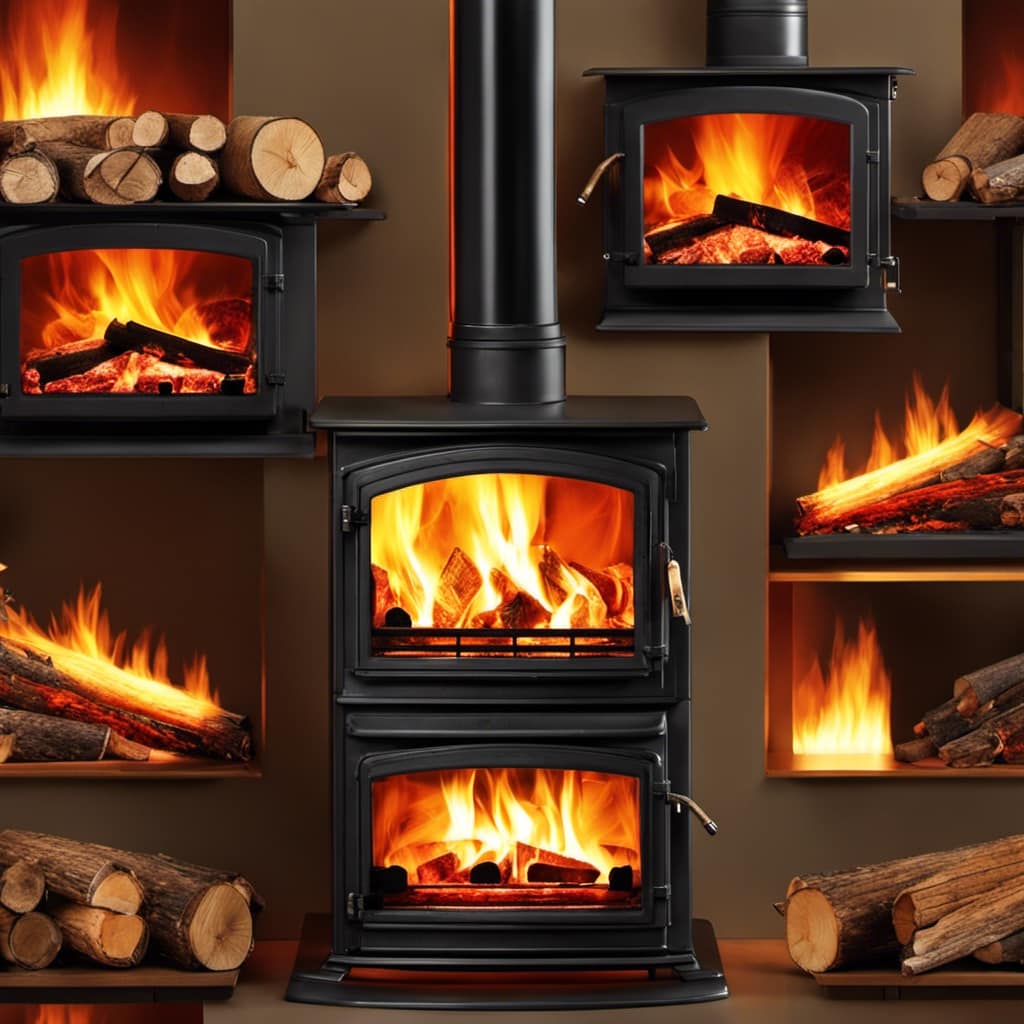
Like a skilled gardener, with these strategies, you can cultivate a cozy haven that will keep you snug and comfortable all night long.
Growing up surrounded by the vast beauty of nature, Sierra was always drawn to the call of the wild. While others sought the comfort of the familiar, she ventured out, embracing the unpredictable and finding stories in the heartbeat of nature.
At the epicenter of every remarkable venture lies a dynamic team—a fusion of diverse talents, visions, and passions. The essence of Best Small Wood Stoves is crafted and refined by such a trio: Sierra, Logan, and Terra. Their collective expertise has transformed the platform into a leading authority on small wood stoves, radiating warmth and knowledge in equal measure.





